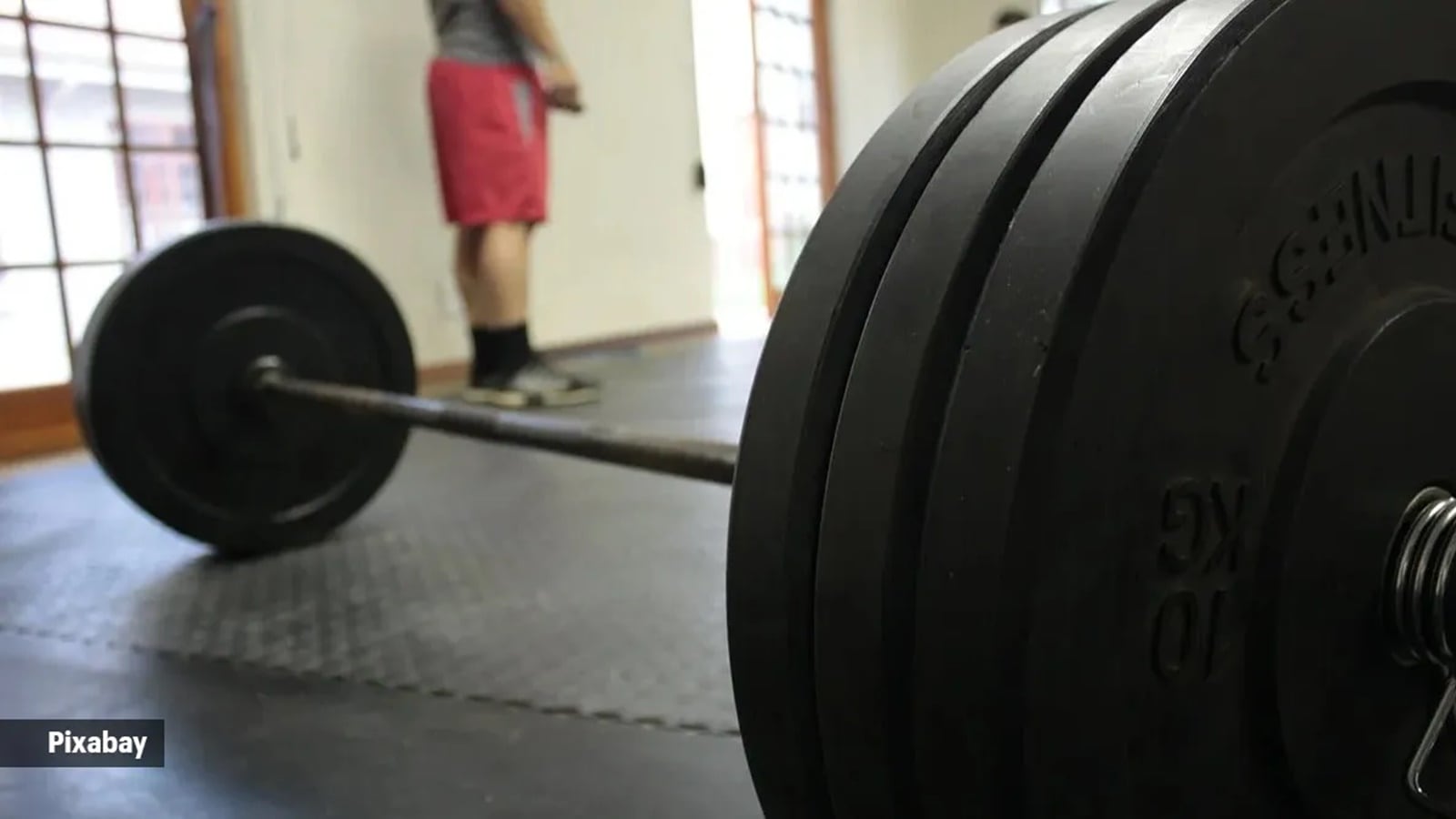📣 For more lifestyle news, click here to join our WhatsApp Channel and also follow us on Instagram
Trying weight lifting for the first time like actor Krishna Mukherjee? Here’s what to keep in mind
Avoiding jerky or rapid motions helps engage the targetted muscles effectively and reduces the risk of strains or tears, said fitness expert Garima Goyal
 Krishna Mukherjee tries weight lifting for the first time (Source: Krishna Mukherjee/Instagram)
Krishna Mukherjee tries weight lifting for the first time (Source: Krishna Mukherjee/Instagram)Strength and endurance training is always stressed for health and fitness. And if experts are to go by, it is never too late to join the weight lifting bandwagon that, if done consistently, under guidance can help you keep your joints agile and meet your fitness goals. Giving us much-needed inspiration was actor Krishna Mukherjee who shared a glimpse of his weightlifting in the gym.
“Trying Weight Lifting For the First Time,” said Krishna, tagging her fitness instructor Ali.
Whether you are a novice or an experienced lifter, understanding and implementing correct weight lifting techniques is paramount for a safe and effective workout. Taking a cue, we decided to understand how to do weight lifting correctly, especially for beginners.
How do you do weight lifting correctly?
Weight lifting is a multifaceted discipline that demands precision, proper form, and a strategic approach to achieve optimal results while minimising the risk of injury. To embark on a weight lifting journey, begin with selecting an appropriate weight. “For beginners, it is advisable to start with lighter weights to familiarise the body with the movements and reduce the likelihood of strain. Gradually increasing the load as strength improves is a key principle in progressive overload, a fundamental concept in weight training,” explained fitness expert Garima Goyal.
Formulating a solid foundation begins with mastering the basic movements, such as squats, deadlifts, bench presses, and overhead presses.
According to Goyal, these compound exercises engage multiple muscle groups simultaneously, promoting overall strength and muscle development. “Focusing on these foundational exercises allows for a comprehensive and efficient workout routine,” said Goyal.
As you approach the barbell or dumbbells, prioritise maintaining proper posture. “In a squat, for instance, keep the back straight, chest up, and ensure that the knees align with the toes. Distribute the weight evenly across both feet to enhance stability. Similar attention to detail applies to other exercises, where maintaining a neutral spine and proper joint alignment is crucial for injury prevention,” Goyal shared.
Dos and don’ts
*Controlled movements are essential in weight lifting. Avoiding jerky or rapid motions helps engage the targetted muscles effectively and reduces the risk of strains or tears. Slow and deliberate movements also allow for a more profound mind-muscle connection, enhancing the overall effectiveness of the workout.
*Breathing plays a significant role in weight lifting. Coordinating breath with movement not only aids in stabilising the core but also helps regulate intra-abdominal pressure. For instance, during a squat, take a deep breath before descending and exhale as you push back up. This breathing technique enhances both performance and safety.
*While self-learning can be beneficial, seeking guidance from fitness professionals or certified trainers is highly recommended. They can provide personalised advice based on your fitness level, goals, and potential limitations or health concerns. “A professional’s keen eye can identify subtle form adjustments that may significantly impact the effectiveness and safety of your weight lifting routine,” said Goyal.
 Here’s why weight training is a must (Source: Pixabay)
Here’s why weight training is a must (Source: Pixabay)
*Progression in weight lifting should be gradual. Rapidly increasing the load may lead to overtraining, fatigue, and potential injuries. “Periodisation, a structured approach that involves varying intensity and volume over time, is a valuable strategy to prevent plateaus and promote long-term gains in strength and muscle mass,” said Goyal.
*Regularly incorporating rest days into your routine is equally important. Muscles need time to recover and grow stronger; overtraining can lead to burnout and increased susceptibility to injuries. “Adequate sleep, proper nutrition, and hydration further contribute to recovery and overall well-being,” Goyal urged.
View this post on Instagram
📣 For more lifestyle news, click here to join our WhatsApp Channel and also follow us on Instagram
Photos



- 01
- 02
- 03
- 04
- 05
























